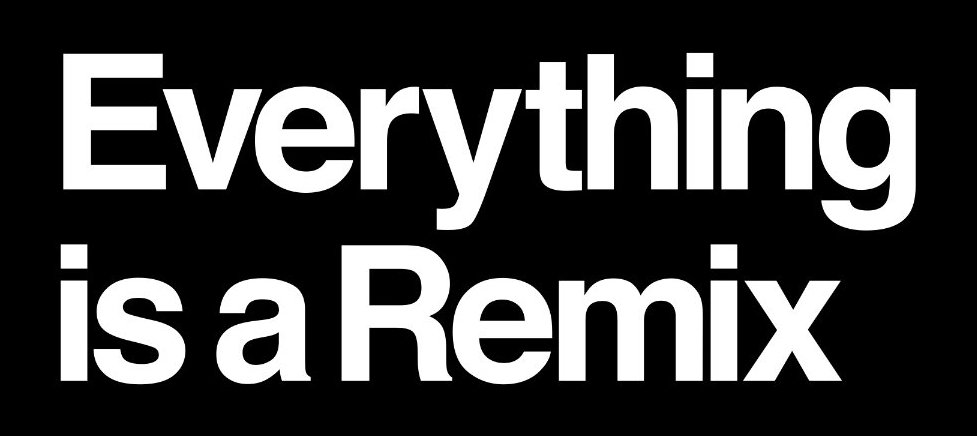Where My Big Idea Came From
I’ve often been asked where the idea for Everything is a Remix came from. But I’ve never given a detailed answer because it came from such a wide and wild melee of sources.
For my upcoming creativity course, The Remix Method, I will answer this question once and for all. But here’s some of the explanation.
Everything is a Remix came unbidden
Everything is a Remix emerged. There was no plan and I wasn’t pursuing anything in particular. This was the process in a nutshell:
I discovered interesting segments
I saw a connection between them
I merged those into a narrative
I gave that narrative a theme
The individual breakdown sections came first: Apple Macintosh, Quentin Tarantino, Star Wars, and Led Zeppelin, along with William Burrough’s cut-ups. I’d likely known about the Mac’s origins for years but realized it could be a good video. Kill Bill came out a few years earlier and I was film nerdy enough to know that it was packed with copying. The Mac and Kill Bill were the bits that got the ball rolling.
All I intended to do with these segments was release them as separate short videos. I didn’t even know they had any relation other than being examples of creative work. But once I had a few of them, I saw a deeper theme, although I couldn’t quite name it.
Along comes remixing
Mash-ups were exploding at the time and I saw the connection between that and these older, classic works. But I didn’t like that term mash-up and it seemed too specific to music. I never considered using it as the framing.
The term remix came from Larry Lessig’s 2008 book Remix. That book was the biggest single influence on Everything is a Remix. This was the first time I’d ever seen the word remix used to mean anything more than a music remix. I remixed Lessig’s use of the remixing concept.
From remixing to hip hop
Music seemed the best way to start telling this story. Hip-hop was the clear way to bridge mash-ups and my first break-down, Led Zeppelin. Hip-hop required almost no research. I’d lived through its rise and knew its history.
The actual phrase Everything is a Remix was one of the last things I did. It was conceived quickly and I ran with it. It just seemed a succinct way to sum up the video.
The source of the style
Mash-up culture and hip-hop were the major stylistic influences on Everything is a Remix, but a couple early video essays took root in my imagination.
The primary influence was The Substance of Style by Matt Zoller Seitz, which was about the stylistic influences of Wes Anderson. Seitz’s breakdowns and split screens strongly influenced me. (That video seems to be offline. If anyone can find it, please send it to me!)
Another big influence was Red Letter Media’s Star Wars: The Phantom Menace Review. I didn’t especially like the Plinkett character or the gross comedy, but I liked the analysis and the format. That series also showed me that you could make a video about older stuff and people might care. (The Phantom Menace had been out for nine years.) Aside from mash-ups, there was nothing topical in Everything is a Remix.
Those two series were major, early innovations in the evolution of the video essay format.
The Everything is a Remix concept had been brewing for many months, but the first Everything is a Remix video was made quickly. There wasn’t much editing or even research. The Led Zeppelin segment came together fast and was mostly sourced from this.
There’s way more to the origin of Everything is a Remix and it’s taken some time to unravel it. Pre-order The Remix Method to get the full deep-dive.
